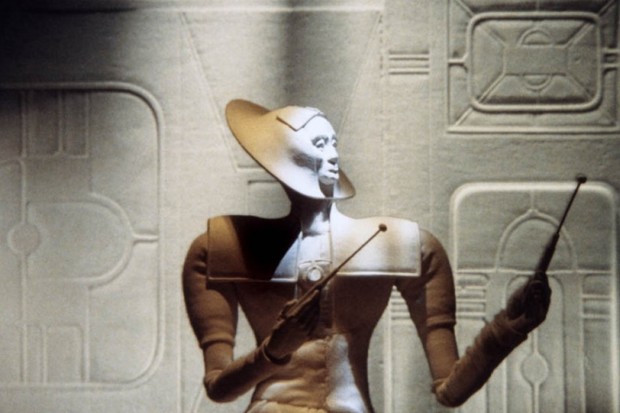GoCritic! Review: Chronopolis
- A meditative take on creation and technology from Polish animator Piotr Kamler, 1982's Chronopolis is both an homage to the art of the 1920s and an unexpected cautionary tale about the world we live in a century later

A doll climbs a wall with a backpack on its shoulders. Sections of buildings are displayed in rapid succession. An enigmatic inscription reveals a word, Chronopolis, before deteriorating into dust. The tale of this city is summed up by a brief caption at the start of the film: une histoire d’éternité et de désir. What follows these first sequences is entirely in line with the grandly poetic premise encapsulated in this sentence.
It took ten years for Piotr Kamler to complete his first and only feature-length film. In 1982 it was finally presented at the Cannes Film Festival. After this premiere, the Polish director decided to cut 14 minutes and remove any form of narration from the 66-minute original, leaving the film without dialogue and boosting its elusive, enchanting appeal.
Experimental at its core, Chronopolis can definitely feel cryptic but never for a second uninteresting. We see godlike creatures creating a strange ball. One of them inserts a strange object inside of it by way of a machine, as if this divine worker were infusing life into that truc sphérique. The act of creation involves many meticulous stages here, as if it were a product being made in a factory. Once the necessary steps are completed, the ball comes to life and encounters the doll we bumped into at the beginning. From that point on, the focus is on the friendship that follows this meeting.
Kamler’s captivating endeavour now looks prophetic in many ways. Borrowing from art deco and the expressionistic register of films like Fritz Lang’s Metropolis (1927), what we have here is a timeless tale which nonetheless anticipates a certain état d'esprit we all share today, forty years later. Who are these gigantic statues wielding magical sticks? We can’t help but notice a pre-echo of current AI art. To a certain extent, the precision with which they create objects out of nothing after processing data that might consist of memories, recalls Ghost in the Shell (1995), where memories form ghosts.
Hypnotic from start to finish, Chronopolis ultimately feels like some kind of good omen in this current period of profound change, extreme confusion, and concern over what AI may yield. These "gods," solemnly hieratic, might pre-echo our eventual salvation: it is they who create the mysterious "ball," which in turn helps the doll-like figures to defeat the gods themselves.
If we equate the gods in the film with AI in the world of the 2020s, we might perhaps hope that a similar "ball" will somehow materialise and enable us to thrive, despite the challenges ascribable to the all-pervasive presence of technology. The joyful and lengthy dance between the doll-figure and the ball leads directly to the process of decay which finally obliterates the decadent city of Chronopolis, providing one of the most satisfying climaxes in the realms of sci-fi, whether animated or live-action.
Did you enjoy reading this article? Please subscribe to our newsletter to receive more stories like this directly in your inbox.















